
Advertising & Brands
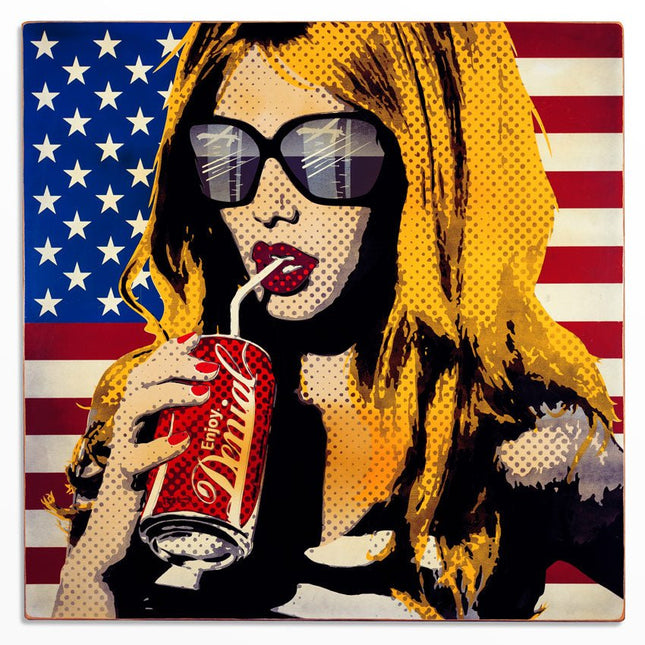
Denial- Daniel Bombardier What Drones? HPM Spray Paint Wood Stencil by Denial- Daniel Bombardier
What Drones? Limited Edition Hand-Embellished Spray Paint, Acrylic, Stencil, Mixed Media On Cradled Wood Panel by Denial Graffiti Street Artist Modern Pop Art. 2015 Signed & Numbered Limited Edition of HPM Stencil 5 Artwork Size 48x30 Canadian artist Denial and Australian-born Ben Frost have joined forces in a bold exhibition of new work that explores the boundaries of appropriation, in confronting re-imaginings of our current dystopian society. Self-confessed ‘visual thieves’, both artists have had a long history of stealing and subverting the cultural icons that the advertising and consumerist world has thrust upon us, to create new and pertinent interpretations that are as confronting as they are humorous. Denial and Frost formed an instant friendship since their meeting in Canada in 2011 and have been creating engaging street and gallery work ever since. "Company of Thieves" sees their collaboration push further, with large and small-scale works that reference Pop Art, Graffiti, and the corporate world they rebel against. Denial’s art is strongly political and social since the artist takes specific positions against issues, such as capitalism, consumer culture, and advertisements. More importantly, the artist is aware of his choices and motivations: “I like to think of myself as activist pop art. How I relate with cartoons and graphics is a lot easier than I do with photo-realistic stuff" Another aspect of Denial's work is humor. His work is satirical, which, by definition, means that it uses humor as a confronting mechanism.
$9,997.00
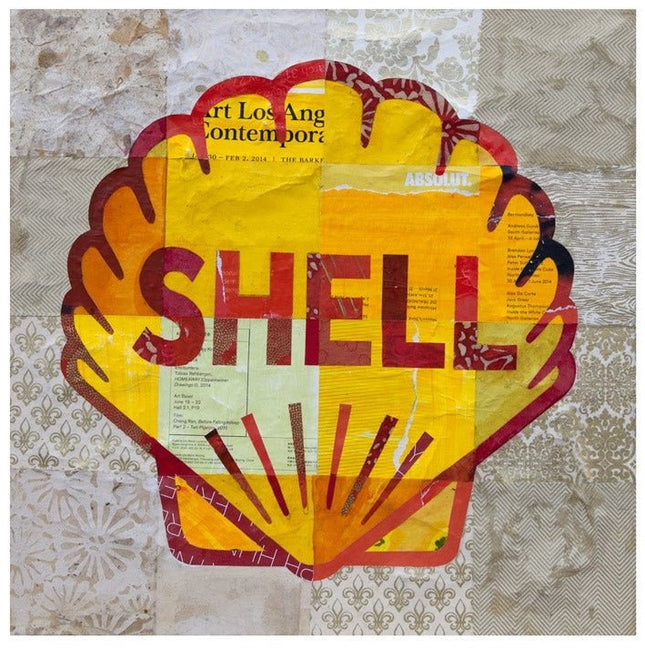
Cey Adams Shell PP Archival Pigment Print by Cey Adams
Shell PP Printers Proof Limited Edition Archival Pigment Prints on 310gsm Fine Art Paper by Cey Adams Graffiti Street Artist Modern Pop Art. PP Printers Proof Signed & Marked PP Limited Edition Artwork Size 18x18 Shell Archival Print by Cey Adams "The whole idea behind my Trusted Brands series was that I wanted to revisit many of the iconic logos of my youth to reconnect to familiar things. These pieces are mostly made of handmade fiber papers from India and Nepal. I wanted to do something rivaling my friends who used spray paint and connected with my graffiti roots, but I didn't want to do what everybody else did. I thought it would be interesting to challenge myself to use a medium I have never used before, and collage spoke to me." - Cey Adams. Cey Adams' "Shell" - A Convergence of Branding and Art Cey Adams, a foundational figure in graffiti and street pop art, presents a compelling piece in his "Shell PP Printers Proof Limited Edition." This work is part of Adams' "Trusted Brands" series, where he revisits the emblematic logos that marked his youth. The print, an 18x18 archival pigment on fine art paper, showcases his exploration into collage, setting him apart from his contemporaries who favored spray paint. This piece is a Printer's Proof, signed and marked by Adams, adding a layer of exclusivity and collectibility. Adams' choice to use handmade fiber papers from India and Nepal lends an organic texture that contrasts with the commercial sharpness of the Shell logo. His work is a nod to nostalgia and a dialogue between past and present, consumerism and craftsmanship. The "Shell" piece stands out as a testament to Adams' ability to innovate within his graffiti roots while pushing the boundaries of his artistic expression. In Adams' own words, his college journey was challenging to escape the graffiti norm. His "Trusted Brands" series, including the "Shell" print, reflects this personal and artistic quest to connect with familiar symbols uniquely, embodying the essence of modern pop art within the urban landscape.
$1,000.00
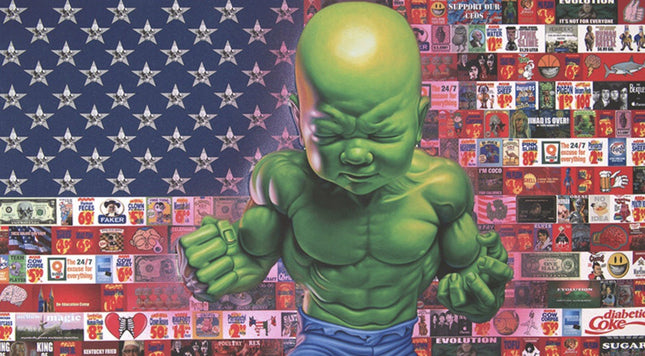
Ron English All-American Temper Tot HPM Embellished Giclee Print by Ron English
All-American Temper Tot Artwork Giclee w/ HPM Airbrush Spray Paint Embleshment Limited Edition Print on Fine Art Paper by Pop Culture Graffiti Artist Ron English. Hand-painted multiple with airbrush spray embellishment around the Hulk-like Temper Tot. Created to celebrate the mural that Ron created on the Houston Bowery Wall in NYC.
$394.00
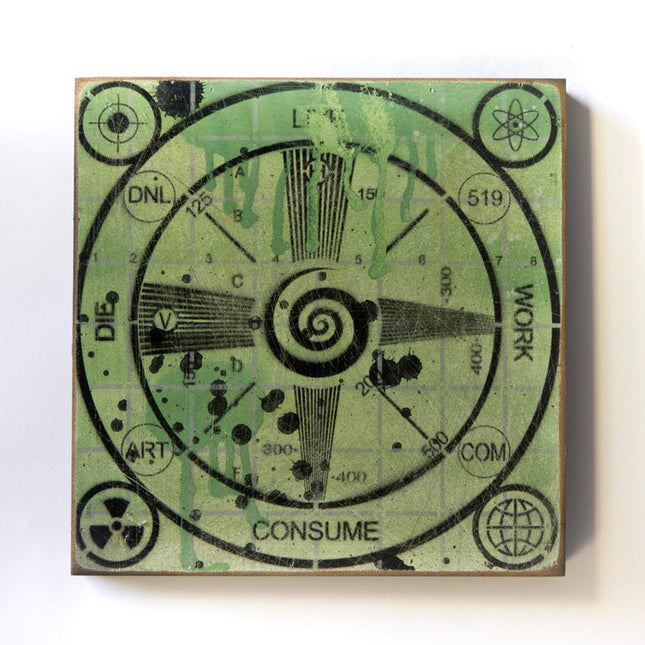
Denial- Daniel Bombardier Live. Work. Consume. Die. 49 HPM Wood Stencil Print by Denial- Daniel Bombardier
Live. Work. Consume. Die. 49 Limited Edition Hand-Embellished Stencil, Spray Paint & Acrylic on Cradled Wood by Denial Graffiti Street Artist Modern Pop Art. 2015 Signed Limited Edition of 55 Artwork Size 12x12 "I have a fascination with television test patterns, there is something kind of apocalyptic about them. Like if you were ever seeing one then something terrible was happening. I also put some messaging in this piece that relates to what I believe is the true messaging in most television ads. Live, work, consume, die is really what TV is telling you to do, be it subliminally or not." - Denial Denial has evolved as one the most prominent figures of contemporary pop artists, who nonetheless, continue to stay relevant and is interested in generating thought-provoking commentary. He has a long history of exploring the boundaries of appropriation, which he uses as a means of subverting the value of cultural products, imprinted in the collective memory of the Western civilization. His work, in other words, is inviting the viewer to re-imagine our dystopian society as a way of confronting it, with humor and irony as the biggest tools of the artist.
$2,290.00
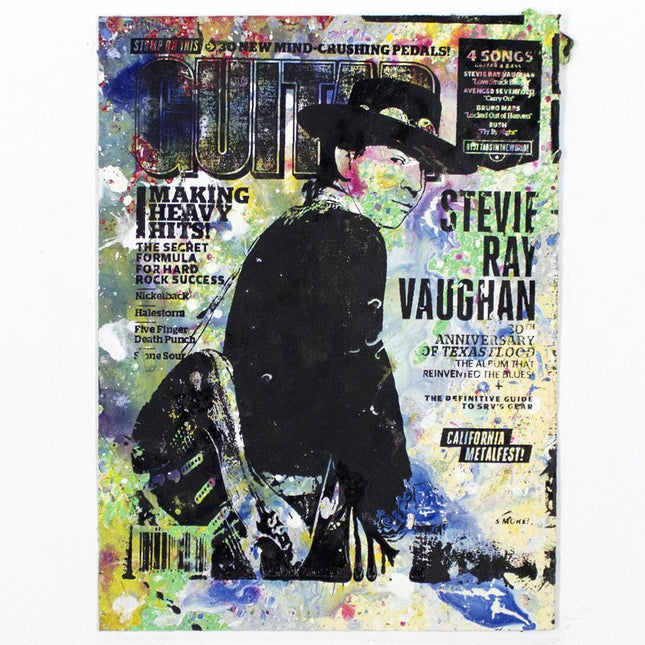
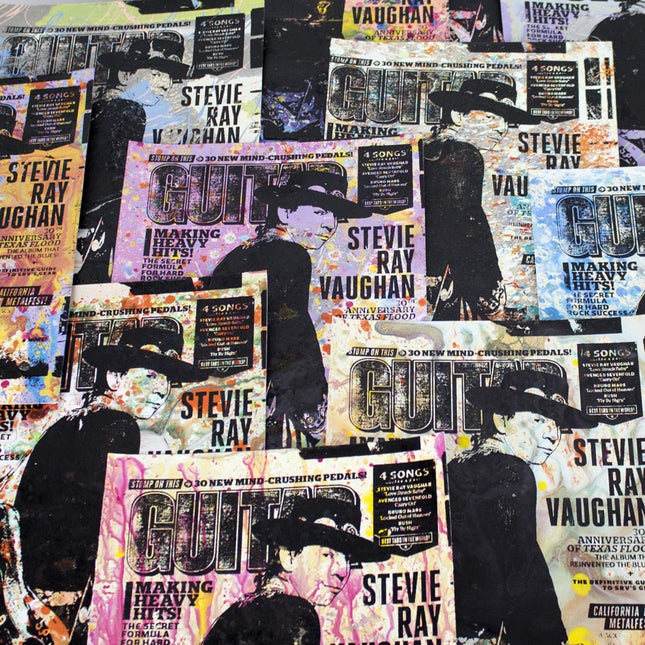
Bobby Hill Stevie Ray Vaughan Guitar Magazine HPM Acrylic Silkscreen Print by Bobby Hill
Stevie Ray Vaughan Guitar Magazine Limited Edition Hand-Embellished Mixed Media Screen Print on 200lbs Heavyweight Paper by Bobby Hill Graffiti Street Artist Modern Pop Art. Each piece is unique and colors, painting, spray paintings made by hand by the artist are random, vary, and you may not receive the exact pictured item! "I use photographic images as the basis for the art, but I would sometimes draw directly on the acetate before I burn the screens to bring out parts of the images I felt were important. Each piece for this run was individually screen printed and hand-painted using a variety of acrylic and other mediums. Take notice of the colors rather than the image, even though that might be difficult to do sometimes. The colors represent what's going on in my life at any given moment." - Bobby Hill
$153.00
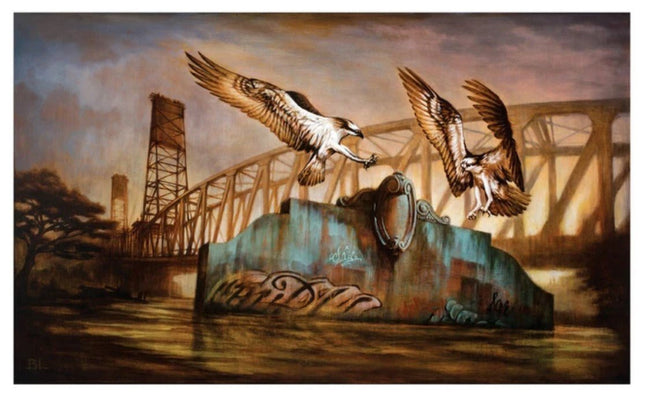
Brin Levinson Remnants Angels Giclee Print by Brin Levinson
Remnant's Angels Artwork Giclee Limited Edition Print on Fine Art Paper by Pop Culture Graffiti Artist Brin Levinson. Brin Levinson - "Remnant's Angels" Limited edition fine art giclee print Signed and numbered by the artist Edition of 25 copies 12" x 18"
$99.00
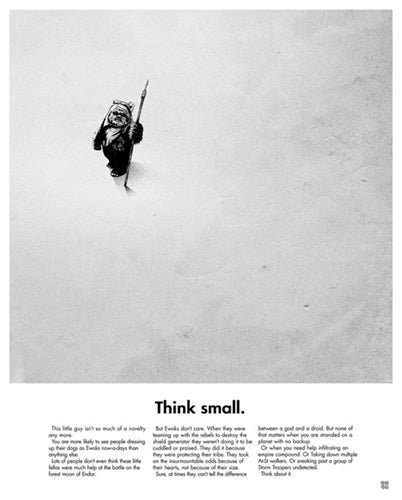
Justin VanGenderen Think Small Silkscreen Print by Justin VanGenderen
Think Small Artwork Screen-Print Limited Edition Print on Fine Art Paper by Pop Culture Graffiti Artist Justin VanGenderen. Justin VanGenderen " Think Small" (NYCC 2015 Exclusive) signed and numbered by the artist limited edition screen print only 250 copies made 16.5" x 20.5" Unframed: $35 More
$99.00









